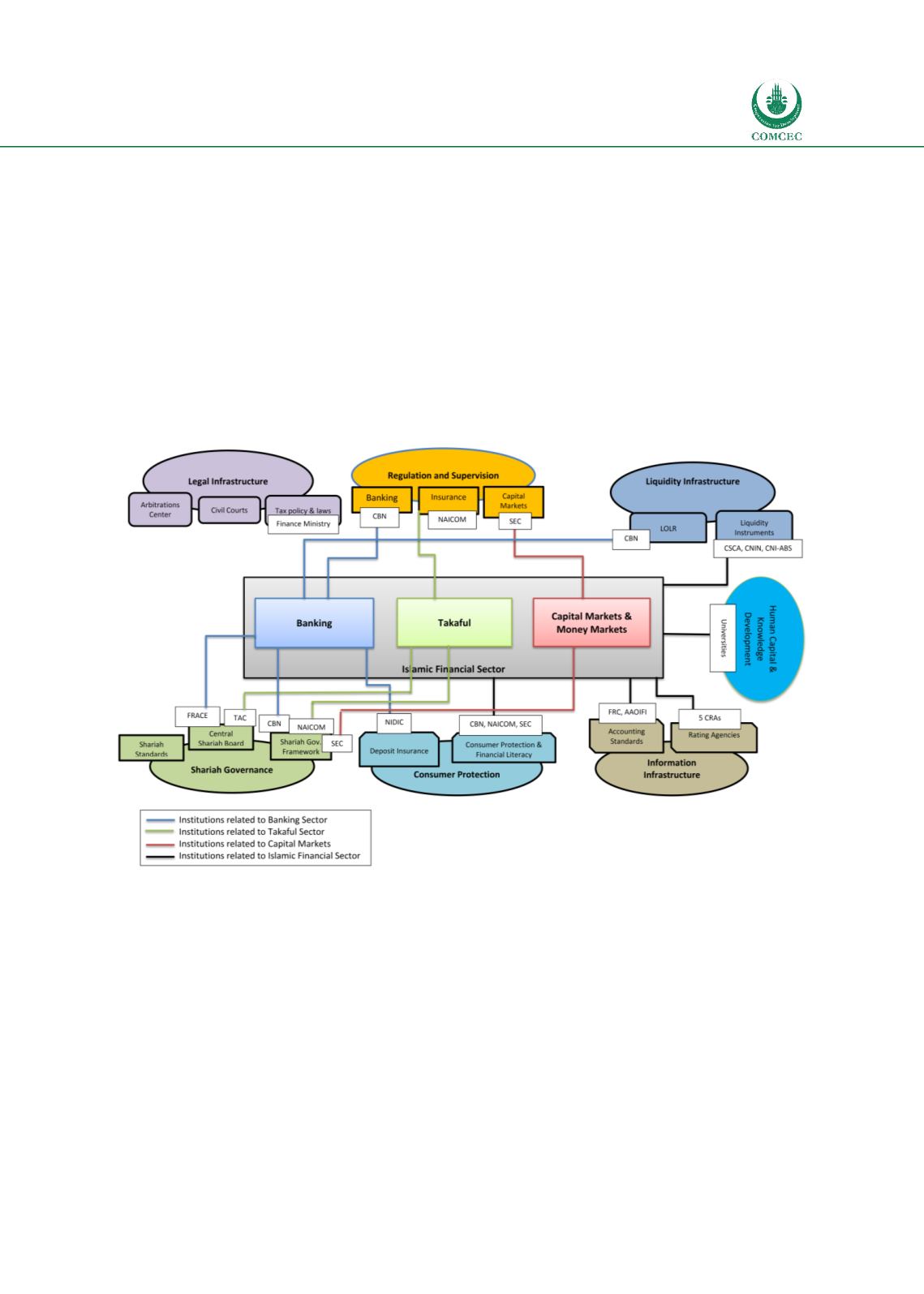

National and Global Islamic Financial Architecture:
Prolems and Possible Solutions for the OIC Member Countries
101
prospects for growth. The sub-sector is, however, being challenged by a lack of adequate
Islamic finance architecture. The legal environment is still not fully developed to effectively
support the workings of Islamic finance. The legal system limits the ability of the regulatory
bodies, such as the CBN to come up with robust liquidity management instruments thereby
leaving the Islamic financial institutions in a disadvantageous position in managing their
liquidity. Despite the challenge, the regulatory bodies were able to issue guidelines for the
regulation and supervision of the institutions as well as
Shari’ah
governance standard. The
regulators have embarked on an Islamic finance awareness campaign as a key component of
their financial inclusion strategy. In partnership with the private sector, they have also
initiated a number of capacity development programmes as a way of addressing the manpower
challenge in the sub-sector. In conclusion, while much has been done, there is a need to further
strengthen the legal environment to give a full backing to Islamic finance in Nigeria.
Chart
4.5: Islamic Financial Architecture Institutions—Nigeria
















